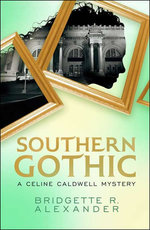 I am delighted to be joined on my blog today by Bridgette R Alexander, author of SOUTHERN GOTHIC: A Celine Caldwell Mystery (to be released March 15, 2016). I had the pleasure of reading Bridgette's debut novel a few weeks ago, and I was struck by the authenticity of her main character's voice. I thought that her amateur sleuth, Celine Caldwell, came across as a "real" teenager--which is actually not an easy feat. So I asked Bridgette to talk about her experience with writing YA fiction. SC: Bridgette, why did you decide to write YA? BA: I grew up loving ABC’s after school specials. What I liked about them was that each story was told from the perspective of a teenage girl, usually, and it gave me a sense that I wasn’t alone in my day-to-day struggles as an adolescent. By that I mean, adolescence is a tough place to be in and you’re there for a long period of time. You are caught between two worlds, one world of a child – its only two or three years ago you were taken to the junior’s section of a department store and your mother was selecting clothes for you. Your world was pretty much being established by the adults around you. Then, there is this other world of [looming] adulthood. Total and complete agency – by you; at 14 or 16 you can make some decisions for yourself, at least what you’re going to wear and who your friends are; and the biggest of all – eros – your attraction and your identity. For me, those moments were paramount. So much so, that I like to view being an adult as an old-kid with benefits. SC: Are there any authors who particularly inspired you? BA: I was introduced to some of my all-time favorite authors when I was in the 7th grade: Mark Twain; John Steinbeck; James Baldwin; William Faulkner; Tennessee Williams; and Hermann Melville. I loved how those works transformed me into the worlds the authors created and caused me to think about the world I inhabited. Then on my own I found the works of other authors and also fell in love with them: Jackie Collins; Harold Robbins; Judith Krantz; I know, I know…they are not exactly children’s authors, but I so loved their works. Mystery and thriller writers I just adore – Agatha Christie, Steven King Joyce Carol Oates and Sarah Paretsky; and of YA writers I really love the work of Sarah Dessen, I love her stories. She totally captures the voice of a strong, independent teenage girl. There are sooo many writers I love, these are just a few of them. SC: What do you enjoy most about writing YA? BA: I like seeing the world fresh again. SC: What kinds of challenges have you faced in writing YA? BA: In writing…not so much. At the moment when I could visualize Celine Caldwell and her life, then her all of her friends and their lives, it was like a motion picture – fluid, moving, colorful and rich with characters. For me it’s been more of a head-game I've had to overcome. The notion of the solitary artist…alone in his or her misery as the only path to creativity is a romantic construct. One that at the on-start of developing and trying to write the Celine Caldwell Mysteries, I thought I was bound to adapt. It was difficult. As a scholar my life was writing among other scholars; sharing my works and dissecting that work with other scholars. As a scholar and thinker I led a fully engaged life. Only in the archives and the library stacks would I actually be in solitude. When I adapted to my writing the engaged-life I was used to, it felt real and true. I am creating characters, developing scenes, structuring the chapters, going back and forth with my editors. SC: How do you make sure your characters are “authentic”? In terms of voice, dialogue, mannerisms? BA: At the beginning of writing Celine Caldwell Mystery series, I organized a teen council made up of girls between the ages of 12 and 18. We’d meet and I’d give them a Celine-Scenario and ask them what would they do or if Celine’s actions were authentic for a teenager, and not just as a teen being driven by an adult. It was important for me to remove myself as much as possible from the equation of Celine Caldwell, 16 year old art world sleuth. Now that’s more of the technical work I’ve done, compared to the easy going fun time I make time for in talking and listening to teen voices. I continue to spend a good deal of time with teenagers because I strongly believe from where I stand it easy for me to “slip” back into the voice and mannerism of an adult person. SC: I know you have a daughter...did you learn anything from her that helped you write your book, or offer insight into the teenager experience? BA: My daughter is the inspiration behind Celine Caldwell. I created [Celine] when my daughter was a newborn. I’d often imagine her future -- how would she relate to the world; what would she look like once she becomes a teenager. My daughter’s life is very different from my upbringing. Her life looks more like the character Celine Caldwell’s with the big exception, my daughter has a doting mother and father. SC: What advice if any would you offer someone interested in writing YA? People or writers hear this a lot…but it stands to be repeated. Write what you know and do it from your soul. 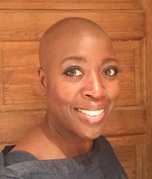 Bridgette R. Alexander is a modern art historian. She received her graduate training in 19th century French art history at the University of Chicago. Alexander worked with some of the world’s greatest museums in New York, Paris, Berlin and Chicago and developed art education programs; curated exhibits; she has taught and published in art history. She’s been featured in a number of publications including, Art + Auction Magazine; the Wall Street Journal; and the Washington Post. SOUTHERN GOTHIC is her debut novel. Alexander currently lives in Chicago and when not writing, she takes her husband, daughter and friends on midnight tours of the cultural institutions. Visit her website (http://celinecaldwell.com).
0 Comments
After my kids go to bed tonight, I'm going to be sinking into a novel that I've been looking forward to reading since I first heard about it-- Lori Rader-Day's, Little Pretty Things. In preparation I invited Lori to join me on my blog today and answer a few questions about her second novel, to be released July 7, 2015 from Seventh Street Books. But first, the official blurb: 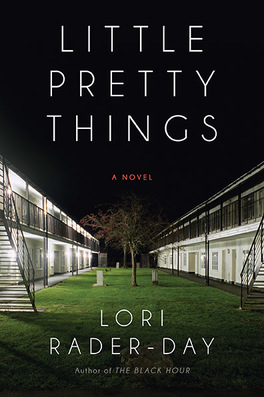 OLD RIVALRIES NEVER DIE. BUT SOME RIVALS DO. Juliet Townsend is used to losing. Back in high school, she lost every track team race to her best friend, Madeleine Bell. Ten years later, she’s still running behind, stuck in a dead-end job cleaning rooms at the Mid-Night Inn, a one-star motel that attracts only the cheap or the desperate. But what life won’t provide, Juliet takes. Then one night, Maddy checks in. Well-dressed, flashing a huge diamond ring, and as beautiful as ever, Maddy has it all. By the next morning, though, Juliet is no longer jealous of Maddy—she’s the chief suspect in her murder. To protect herself, Juliet investigates the circumstances of her friend’s death. But what she learns about Maddy’s life might cost Juliet everything she didn’t realize she had. Can you tell us a little about Little Pretty Things? Little Pretty Things features Juliet Townsend, a not-quite-30 woman stuck in her hometown and in a bad job, cleaning rooms at a low-rate roadside motel where only crackpots and cheapskates stay. Then her former best friend and high school track team rival shows up—rich, beautiful, and everything that Juliet isn't—and checks in. What could have been a reunion takes a turn when Juliet discovers her friend's body the next morning. The book is about women's friendships, competition, and growing up, finally, long after you should have. Was it easier, harder or about the same as writing your first novel, The Black Hour? (What I’m really curious about is whether this was a similar process for you, or different?) I started Little Pretty Things back before my first novel was anywhere close to published, so I had a running start, but then I realized how much work publishing and promoting a novel was. The drafting part of Little Pretty Things got hung up a bit while I figured out some things, and then my agent sold the second novel before it was done. So in the end I had to write to a deadline for the first time. It was a little challenging for me, but I did learn some things about my own process and, due to my day-job schedule, when in the year's calendar it's best for me to be drafting and when it's best to be editing. Hoping to put some of that self-knowledge to work on my next book, which I'm writing for release next summer. How does your chambermaid compare to my chambermaid? Well, my chambermaid is in modern times, so she's very free to move around as a woman in society—but she really doesn't. Juliet is much more timid, in the beginning, than Lucy is in her situation. What they have in common is that they both won't stay chambermaids for long. (I was just joking when I asked this question, but thanks for the thoughtful reply!!!-SC) What kind of research did you have to do for this book? Well, I've never been a cleaner of any kind, so I read a book written by someone who had worked on the staff of a hotel. Luckily Juliet Townsend isn't much of a cleaner, either, so I didn't have to know how to do the job well. The other topic I had to learn about for Little Pretty Things was running. I was a runner for about five seconds over ten years ago, but I was never a high school track runner. I wrote the book as well as could, using good guesses, and then asked a friend of mine, a writer as well as a former track team runner, to read the book for gross errors. She said I got it right, and gave me a few additional ideas for opportunities to make things even better. I don't have the research background you do, Susie, so I don't mind stabbing into the dark a bit. It's fiction, after all. But I don't want to be wrong about the details that will take readers out of the story and ruin their enjoyment of reading. (Yes...I totally agree! -SC) Thanks Lori, and best of luck!
Given that My Fair Lady is one of my favorite musicals, I was quite intrigued when I learned that D.E. Ireland had transformed the unlikely uncouple--the curmudgeonly linguistics professor Henry Higgins and the charming but inarticulate Covent Garden flower-girl--into a crime-solving duo. Loverly! I am thrilled that the two authors who comprise D.E. Ireland were able to waltz their way over to my blog today, and answer some questions about their debut novel and the writing process. 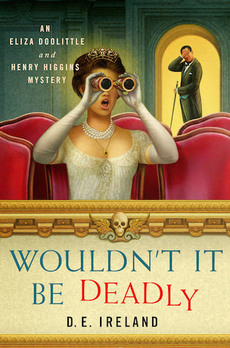 From the official blurb: Following her successful appearance at an Embassy Ball—where Eliza Doolittle won Professor Henry Higgins’ bet that he could pass off a Cockney flower girl as a duchess—Eliza becomes an assistant to his chief rival Emil Nepommuck. After Nepommuck publicly takes credit for transforming Eliza into a lady, an enraged Higgins submits proof to a London newspaper that Nepommuck is a fraud. When Nepommuck is found with a dagger in his back, Henry Higgins becomes Scotland Yard’s prime suspect... 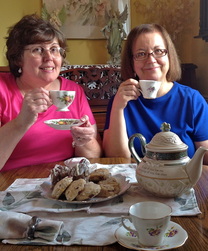 D.E. Ireland researching high tea D.E. Ireland researching high tea SC: I know that the two of you became friends when you were undergraduates, but how did you become “D.E. Ireland?” Can you tell us a little bit about how you decided on the name? Does it mean something? DEI: We are longtime friends and critique partners and have been looking for an idea to collaborate on for years. And voila, while singing to the My Fair Lady soundtrack on her way to visit Sharon a few years back, Meg stumbled on putting Eliza and Higgins together as amateur sleuths. We plotted, outlined, then wrote the first book in the series. Since we're both published authors under our own names, we needed to choose a pseudonym. We finally agreed upon ‘Ireland’ in honor of George Bernard Shaw who was born in Dublin. And ‘D.E.’ is Eliza Doolittle backwards! SC: Your mystery features the unlikely yet beloved couple from stage and screen, Eliza Doolittle and Henry Higgins, from George Bernard Shaw’s Pygmalion (later adapted as My Fair Lady.) What was it about these characters—a guttersnipe from the dredges of London, and a professor of linguistics—that appealed to you as amateur crime-solvers? DEI: We are both huge fans of the play and the movies. Since Shaw's Pygmalion is in the public domain, we used his play and the delightful banter between Eliza and Higgins as the models for our own series' characters. However we had to flesh out their backgrounds along with that of the other characters such as Pickering, Mrs. Pearce, Mrs. Higgins and the Eynsford Hill family. In the play, Eliza worked hard to win Higgins's bet, yet she hadn't truly earned – and kept! – his respect until our series. We want to keep alive the witty exchanges these two whip at each other, and continue to expand on their friendship as they turn their collective talents to sleuthing. That should be great fun. SC: The book offers a great deal of detail about life in Edwardian London (1913). How did you conduct your research into this era? What was the most interesting or surprising thing you learned while conducting your research? DEI: We are both research hounds; Sharon wrote several historical romances set in the Old West and Victorian England, while Meg has written American western mysteries. Sharon was also a college history instructor so the opportunity to research Edwardian England seemed like great fun. We eagerly started digging into the era immediately following the death of King Edward VII. We love the two PBS series Downton Abbey and Mr. Selfridge, and both shows serve as inspiration. But we rely heavily on our "Edwardian Bible" which we have compiled that includes London shops, streets, parks, neighborhoods, food, social behavior, etc. And of course, we always refer to Shaw's Pygmalion, along with his appendices and notes of the play which include descriptions of Higgins' phonetics lab and his mother's Chelsea flat. Book 2 required that we expand our research to include horse racing, Ascot, the Henley Regatta, along with the suffragette movement. The most interesting or surprising thing? Hmm. Since electricity, autos, the telephone, and the cinema had shown up by the 1900s, perhaps it was our realization at how similar life was then to our times now -- except for fashion and manners of course. SC: Do you foresee Henry Higgins developing over time? Will he be out petitioning for votes for women in future novels? DEI: Oh, we think Higgins is the one who will be clinging to his fencepost, kicking and screaming for the old days. Eliza is the changeling of the pair and will tug and pull him into the 20th century! 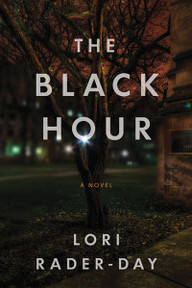 For many of us who work on college campuses, the specter of violence often looms. For instructors, there is an additional vulnerability, a sense of being studied and examined as intently as if they were the subjects of the course. In my day job, instructors frequently speak of feeling naked and exposed when they teach. Indeed, the public scrutiny can be tough for instructors. Even those who can bear it may still acknowledge a somewhat alarming truth: Students may know all kinds of things about us--often well before we know a single thing about them. So looking out at that sea of student faces, instructors may find themselves asking--who are these students, really? What are they thinking? What are they hiding? These are the kinds of questions that Lori Rader-Day explores in her stunning debut novel, The Black Hour (Seventh Street Books). In this compelling work of fiction, a sociology professor seeks to understand why a student she didn't even know tried to kill her. I invited Lori to chat about her novel on my blog. [Full disclosure: Lori and I work at the same university, although we actually met at Printer's Row in Chicago last year.] 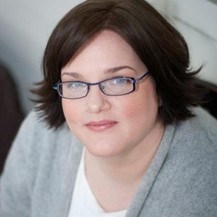 The Talented Lori Rader-Day The Talented Lori Rader-Day Could you tell us about what inspired The Black Hour? I know that you work at a university—what role did that play in your inspiration? You don’t have to work at a university to worry about the violence happening on campuses across the nation, but because I do work at a university, it’s something I think about. But The Black Hour is more about the aftermath than the violence itself. The idea was: what would a first day back on campus be like for someone who survived an act of violence? Since the perpetrator was no mystery, the question had to be why. When I started writing, I didn’t know why, either. I had to keep writing until I knew why. The Black Hour is told through the alternating perspective of two individuals—the sociology professor who was the victim of the shooter, and a graduate student serving as her Teaching Assistant (TA). What contributed to your decision to tell the story using two voices? What were the challenges and the benefits of this technique? Originally I started the book from Amelia’s perspective. In the first few chapters, she met a new graduate student who was interested in her work studying violence. About 50 pages into writing the book, I realized I had a problem. Amelia was newly injured. How was she going to go scampering all over campus looking into her own attack? It turned out that the student, Nathaniel, had more to say. And then took over half the book. The challenge was in keeping the two first-person narrators separate so that a reader would know who was talking at all times, but the opportunities were greater. I had a lot of fun playing them against each other, and forcing them to share the story gave the novel its structure and pace. 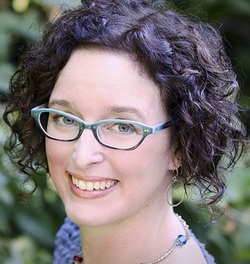 the lovely Lisa Alber the lovely Lisa Alber In 2001, I traveled to County Clare, Ireland with my new husband (aka alpha reader and my chief psychological consultant) on our honeymoon. I remember we were struck by the beauty--and moodiness--of the land. I'm delighted to be joined today by Lisa Alber, who perfectly captures this sense of mystery and longing in her debut novel, KILMOON. 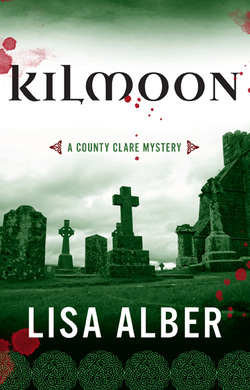 How beautiful is this cover? How beautiful is this cover? From the official blurb: Merrit Chase travels to Ireland to meet her father, a celebrated matchmaker, in hopes that she can mend her troubled past. Instead, her arrival triggers a rising tide of violence, and Merrit finds herself both suspect and victim, accomplice and pawn, in a manipulative game that began thirty years previously. When she discovers that the matchmaker’s treacherous past is at the heart of the chaos, she must decide how far she will go to save him from himself—and to get what she wants, a family. Lisa, thanks for joining us today. What inspired KILMOON? Two places in Lisdoonvarna village, County Clare, Ireland, sparked my imagination: The Matchmaker Bar and an early Christian ruin called Kilmoon Church. The Matchmaker Bar represents the village’s annual matchmaking festival and Kilmoon Church represents secrets long buried. Together they grounded me in place and set my thoughts churning about a matchmaker with a dark past. My dad’s death also inspired this story. I was grieving his passing (from cancer), and it was only later that I realized I was processing our relationship through the father-daughter themes that run through the novel. Of course, in the novel they’re far darker than anything from my life. Thank goodness! Your locale is very evocative—sometimes dreamy, sometimes harsh. How did you settle on County Clare for your location? Did you spend much time there? You might say I accidentally ended up in County Clare. I traveled to Clare for the first time to see an ecological area called The Burren, which is a vast area of limestone leftover from the Ice Age. I’d read about it in a memoir. I planted myself in a random B&B near The Burren—in Lisdoonvarna, as luck would have it. While there, I discovered that Lisdoon (as the locals sometimes call it) hosts an annual matchmaking festival. I visited the area three times for novel research. I found the landscape both harsh and dreamy. How interesting that these aspects of the locale came across to you in the novel! The Burren has a harsh appearance, that’s for sure, and the winds that come in off the Atlantic can be dismal. On the other hand, on mild days, the rolling green hills with their drystone walls are peaceful and otherworldly—like the landscape hasn’t changed in a thousand years. "I’m like a crazed creator in a Gothic horror story": An Interview with Author Helen Smith9/15/2013 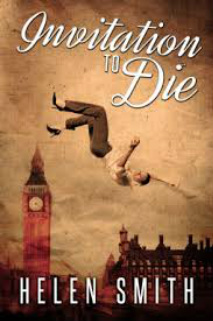 I love this cover! I love this cover! I had the fun of meeting the guest on my blog today--fellow crime writer Helen Smith--last year at Bouchercon. We also share the same awesome agent, David Hale Smith of Inkwell Management. Hilarious in person, Helen has a way of writing that makes her books witty and engaging. From the official blurb: Twenty-six-year-old Emily Castles is out of work… again. So when famous romance author Morgana Blakely offers her a job helping out at a conference in London, Emily accepts. Just as eagerly, American blogger Winnie Kraster accepts an invitation from Morgana to attend as a guest, not realizing she has, in effect, accepted an invitation to die. As a cast of oddball characters assembles at the conference hotel, grievances, differences, and secrets begin to emerge. When Winnie goes missing, and then is found murdered nearby, Emily begins to suspect that someone involved with the conference is responsible. Could it be one of the organizers, one of the authors, a member of the hotel staff, or even the supplier of the chocolates for the conference gift bags? Emily teams up with guest speaker and eccentric philosophy professor Dr. Muriel to find out. Offbeat and engaging, this entertaining comic mystery is the first full-length novel featuring amateur British sleuth Emily Castles. ********************************************************************************** 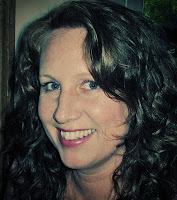 The witty Helen Smith The witty Helen Smith What inspired Invitation to Die? I wanted to write a murder mystery in a setting where a group of strangers – and old friends who might have grudges against one another – were brought together and had to stay together for a short time. I had done a couple of events at the Bloomsbury Festival and liked the idea of using a hotel in Bloomsbury, London, for the location, with a romance authors’ convention as the excuse for everyone to be there. So, did you draw on your experience attending mystery conferences when creating this backdrop? I had to laugh at the way you characterized many of the authors! I attended my first mystery convention last year, after I had finished writing this book. (It’s called Bouchercon and it takes place in a different US city each year. I loved it and I’m going back again this year.) So I’m afraid that the characters are invented. I have worked as an administrator setting up conferences, though, so there’s some authenticity in the background to the story. Tell us about Emily Castles. What’s her background? How does she understand the world? Emily is a bright, practical young woman who is cheerful and inquisitive. She doesn’t have a university education and she struggles to find a job that’s right for her. She tends to do a lot of temp work in offices. It bores her, but as she’s always on the lookout for a new job, and open to new experiences, it means she goes into situations where she ends up investigating whatever mystery interests her. During the course of his investigation, one of your characters, Detective Rory Jones, comments to Emily, “It’s human nature to want to see ourselves at the heart of a drama.” Assuming that’s true, where do you see yourself in this story? Do you identify in particular with one of your characters? I probably identify most with Dr. Muriel. But I’m like a crazed creator in a Gothic horror story: I put a little bit of myself into all my characters to make them come alive; sometimes it’s only the equivalent of one drop of blood, but it’s there. Who or what has most influenced your writing? (This series, or generally?) I love Agatha Christie. I admire her achievements as an author, but I love her stories, too. I read a lot of them when I was making the transition from reading children’s books to reading adult books and I still look forward to watching the new adaptations on TV. Miss Marple is one of my all-time favorite characters. (Mine too!) As far as writing style goes, I have probably been most influenced by Evelyn Waugh. He has a light, comic touch that I would like to emulate. My writing was once compared to his in a review in Time Out, so naturally I was thrilled about that. What is your favorite part of writing/publishing? Least favorite? My favorite part of writing is the editing – polishing up a story after it has been written. I find the actual writing hard-going. My favorite part of the publishing process is seeing the cover because you’re seeing a visual interpretation of what someone else thinks of the book. Your editor will usually say something nice about the manuscript when they read it, but the cover shows you, for the first time, what a stranger really thinks of it. It’s weird, exciting and scary – and flattering, too. What has surprised you the most about writing/ publishing? Oh, that’s a tough one. Being published has lived up to my expectations in lots of ways – the parties are just as much fun as I hoped they would be. I suppose the most surprising thing about the writing is that it never gets any easier. When your first book is published, you think that all the hard work is over. But it isn’t. What advice would you give to aspiring writers? Keep going! You’ll get there. Good luck. What’s next for Emily? What else are you working on? The next book in the series, Beyond Belief, will be published by Thomas & Mercer in January 2014 in ebook, paperback and audiobook format. When a celebrated psychic predicts that a famous magician will be killed in the English seaside town of Torquay, Emily is hired to investigate. I’m currently working on the next book after that, which will be published in January 2015. It takes place at the Edinburgh Festival. Thanks so much! I'm looking forward to your next book! Helen Smith is a member of the Writers Guild of Great Britain, The Crime Writers Association and English PEN. She travelled the world when her daughter was small, doing all sorts of strange jobs to support them both - from cleaning motels to working as a magician's assistant - before returning to live in London where she wrote her first novel, which was published by Gollancz (part of the Hachette Group). She writes novels, children's books, poetry, plays and screenplays, and was the recipient of an Arts Council of England Award. She likes dancing but she doesn't like driving. She likes knitting. Check out her website at http://www.emperorsclothes.co.uk/
I'm joined on my blog today by award-winning author, Anna Lee Huber. I had the pleasure of meeting this talented writer, last year at Bouchercon, during a signing for new authors. On Saturday September 14, Anna and I will be doing a joint signing at Centuries and Sleuths in Forest Park, IL at 11:00. Hope to see you there! ********************************************************************************** 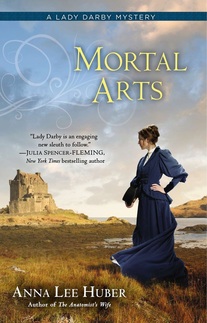 Love the title of Anna's 2nd book! Love the title of Anna's 2nd book! Scotland, 1830. Lady Kiera Darby is no stranger to intrigue-in fact, it seems to follow wherever she goes. After her foray into murder investigation, Kiera must journey to Edinburgh with her family so that her pregnant sister can be close to proper medical care. But the city is full of many things Kiera isn't quite ready to face: the society ladies keen on judging her, her fellow investigator-and romantic entanglement-Sebastian Gage, and ultimately, another deadly mystery. Kiera's old friend Michael Dalmay is about to be married, but the arrival of his older brother-and Kiera's childhood art tutor-William, has thrown everything into chaos. For ten years Will has been missing, committed to an insane asylum by his own father. Kiera is sympathetic to her mentor's plight, especially when rumors swirl about a local girl gone missing. Now Kiera must once again employ her knowledge of the macabre and join forces with Gage in order to prove the innocence of a beloved family friend-and save the marriage of another... ********************************************************************************** 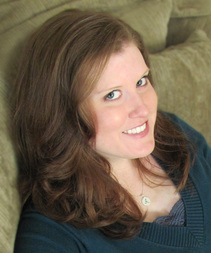 the talented Anna Lee Huber the talented Anna Lee Huber Thanks for joining us today! Mortal Arts, the second in your series featuring Lady Kiera Darby, is set in Scotland in 1830. What made you choose this particular place and time? When I decided to write a historical mystery series with a heroine who has some knowledge of anatomy, I knew 1830 would be the perfect time period. It’s just after the trial of Burke and Hare, two body snatchers-turned-murderers, which plays into the public’s fear of Kiera once news of her involvement with her late husband’s dissections comes to light, and it’s just a few years before the Anatomy Act of 1832. Not to mention all of the other reforms being made with the Catholic Act of 1829, the Reform Act of 1832, the beginnings of the building of railroads, the ramping up of industrialization. It’s a very interesting period. Lots of conflict. Could you also tell us a little about what inspired you? I have difficulty pinpointing exactly what first inspired me to write the Lady Darby novels. I was very deliberate in choosing the genre, and I crafted Kiera’s backstory to give her the investigative skills I wanted her to have, and the rest of her history was created from the consequences of that. The plot of Book 1, The Anatomist’s Wife, even grew from that. I chose to set it in the Scottish Highlands because I needed an isolated location. I tell people that Kiera feels like she’s always been there, in the back of my mind, and I think it’s true. From the very first, even before I knew who she was, I could hear her voice very clearly in my writing. So perhaps that’s why I have trouble deciding on the inspiration. It happened when I wasn’t paying attention. Lady Darby has been described as “an unusual and romantic heroine.” What makes her so unusual? Is she someone you would want to be friends with? First of all, she’s a gifted portrait artist, determined to pursue her art—something not very common for a woman in her time. She has the ability to lose herself in her art, and to see to the heart of the person she is painting, which often unnerves people, even as it makes her portraits special. Even more startling, she was forced to assist her late husband, who was a famous anatomist and surgeon to royalty, with his dissections, sketching them because he did not wish to split the credit for his anatomy textbook with an illustrator. So she has knowledge of anatomy that she’s unwillingly collected. When the scandal broke over her involvement with her husband’s work, society and the general public vilified her, concocting all sorts of gruesome rumors about her. Her standoffish demeanor and quiet reserve do not help matters. She is not comfortable in society or large gatherings, but she is fiercely loyal to those she cares about. She is intelligent, insightful, and witty. I would definitely want her for my friend. Tell us about Sebastian Gage, Lady Darby’s romantic interest. Can you give us a hint as to which actor you would cast to portray him in a film version of the novel? Sebastian Gage is a gentleman inquiry agent who works with his father to help the upper class with their sticky situations. He is charming and extremely attractive, and a bit of a golden boy who is much in demand at society’s gatherings. He also has a reputation as being a bit of a rakehell, but Kiera soon begins to doubt that persona. His true self is somewhat a mystery and he does not share himself easily, which frustrates Kiera to no end. If I got to cast Gage, I would choose someone like Rupert Penry-Jones. He was fabulous as Captain Wentworth in the BBC version of Jane Austen’s Persuasion. (Hmmm...me likes!) 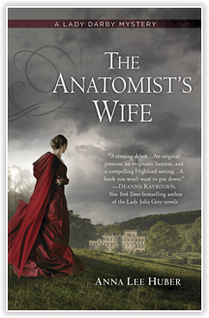 Anna's award-winning first book Anna's award-winning first book What was your favorite part of writing Mortal Arts? My favorite part of writing Mortal Arts was getting to spend more time with the characters I’d created in The Anatomist’s Wife and take them further along on their journey. I love it when they surprise me. Least favorite? My least favorite part was struggling with the doubts and crisis of confidence I had in myself. I had quite a lot of trouble with “imposter syndrome.” There’s this fear, irrational as it may be, that you fooled everyone the first time around. That you truly can’t write. And now you’ll be found out. I constantly had to shore up my belief in myself as a writer. How did writing Mortal Arts compare to writing your debut novel, The Anatomist’s Wife? What was similar about the process? Different? Writing Mortal Arts was my first attempt at writing a sequel, and it was also my first time writing to a publisher’s deadline, both of which added pressure. In one sense it was harder, feeling all of that added pressure, fearing I wouldn’t be able to write another good book. On the other hand, it was also easier. The book was already sold, so all of those worries I felt that I would never be published were no longer there. I’d achieved what I wanted, and that was a huge relief. I had to do more plotting with Mortal Arts. However, I already knew many of the characters, so that was less work. When did you first know you wanted to be a writer? Do you have any manuscripts buried in a drawer somewhere? I first started writing in elementary school, and I have a box full of old stories I wrote then. I moved away from it in high school and then college, but returned to it again after graduation. I wrote four unpublished manuscripts before The Anatomist’s Wife sold. Some of those manuscripts may someday see the light of day, after extensive edits. But others will remain buried on my computer, as they should be. What advice do you have for aspiring writers? First and foremost, never give up. I’m a testament to the power of perseverance. I always say, the only way you are guaranteed not to succeed is if you give up. Second, write, write, write. It’s absolutely the best way to learn. And then find a critique group or a few trusted people who know what they’re doing to help you make your writing better. What’s next? The third Lady Darby novel, A Grave Matter, is scheduled for release in July 2014. I’m finishing that up, and then I want to work on a side project I started a while ago. It’s more of a straight Gothic suspense novel set in Regency England, and I hope to have that polished and ready to go by the end of the year. If it's anything like the first two, it will be another winner! Congrats on your success! ********************************************************************************** Anna Lee Huber is the award-winning author of the Lady Darby historical mystery series. Her debut, The Anatomist’s Wife, has won and been nominated for numerous awards, including two 2013 RITA® Awards and a 2013 Daphne du Maurier Award. Her second novel, Mortal Arts, released September 3rd. She was born and raised in a small town in Ohio, and graduated from Lipscomb University in Nashville, TN with a degree in music and a minor in psychology. She currently lives in Indiana, and enjoys reading, singing, traveling and spending time with her family. Visit her at www.annaleehuber.com. 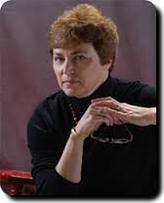 I’m joined today by Peg Herring, author of the Simon & Elizabeth Historical Mysteries, the Dead Detective Paranormal Mysteries, as well as the Loser Mysteries, our focus for this interview. I met Peg at Malice Domestic a few weeks ago when we did a panel together. When I heard about her protagonist Loser, a homeless woman who solves mysteries and speaks only thirty words a day, I had to learn more. *********************************************************************************** From the official blurb: Loser returns to the hills where she was raised in search of peace, but even in lovely West Virginia, trouble manages to find her. One of her fellow foster children returns to the little town of Beulah, and the secrets she carries with her will lead Loser into a tangle of deception. Nadine hasn’t got much to say about why she’s back in Beulah, and her son Eddie might be just a little too good to be true. Still, Loser’s willing to help them - at least until Nadine pulls a disappearing act. Each time Loser learns the answer to a question, another one arises. Why did Nadine run from a comfortable life and a successful husband? Is Eddie a good kid or an opportunistic manipulator? What happened in the town of Romulus that was worth killing for? And most important: Can Loser protect the innocent and at the same time preserve her own life, the life she’s only recently begun to want? *********************************************************************************** 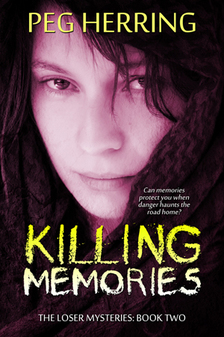 Hi Peg! Thanks for joining me today! Can you tell us more about Loser? PH: Loser is in her mid-twenties and quite dysfunctional. She can’t sleep inside; she counts how many words she speaks per day (under 30 is a must), and she doesn’t interact with people unless she absolutely has to. In the first book, Killing Silence, readers learned how she came to be so damaged. In the second book, Killing Memories, we see her start the long healing process. What inspired your Loser Mysteries, and Killing Memories in particular? PH: I spent several months in Richmond when a family member needed my help. She lived in one of the lovely row houses in the Fan, and I loved walking around the area every afternoon, gawping at the mansions, the statues, and the cobblestone alleys. However, there were homeless people, too, and the thought of someone so desperate living so close to such wealth made an impression on me. How did you go about doing research for your Loser mysteries? I assume it was a little different than how you researched your historical and paranormal series! PH: Definitely! Historical research (as you well know) means a lot of poring over books and websites to achieve historical accuracy. I did most of the research for the Loser Mysteries before I knew I’d be writing the series. Wandering through the Fan was restful for me during a stressful period of my life, but I was soaking up details the whole time. The actual writing means a lot of Internet time, because I live in Michigan, and I can’t just trot off to Richmond to confirm a detail that’s fuzzy in my mind. We’re lucky that so much is available on-line. For example, I located a picture of the DMV to help with Killing Mysteries, and lately I researched the Richmond police force for the third book, Killing Despair on the department’s website. You’ve written three different series now (a feat I’m extremely impressed by). Was your experience with Loser similar or different from the other series? Do you switch between series, or are the other series finished? PH: The idea for a story comes easily: it just floats into my head. I usually begin with a character, and the story builds naturally around him or her. I focus on one book at a time when I’m writing, but I do switch among the series, because they’re all current. Edits for a book in one series might interrupt the writing of another, because they come when the editor sends them. It’s a little rough sometimes to get started again when I start the next book. For example, I just finished one of the historicals, in which Simon is a contented tradesman of the Tudor era, a man who’s comfortable with himself. It took some thought to get myself back into Loser’s head and to put myself on the streets of Richmond with a woman who is definitely not comfortable with herself. What is your favorite part of writing? PH: My favorite thing is that day when the writing goes well, when everything falls into place and makes sense. I sometimes go away from home to remove the distractions of laundry and lawn care, but if I get in the zone at home, I can be productive there, too. Least favorite? PH: My least favorite part of this job is keeping up with the technology, mostly because I’m not that interested. Way back when, I learned MySpace. Then I added Facebook and learned to get around there. Then Goodreads and a host of other reader sites. When Twitter came along, I established a presence there, though it’s pretty minimal. People rave about how other sites help their sales, but I’m reluctant. In the first place, I don’t have any more time, and in the second, I don’t enjoy being lost on Pinterest! What has surprised you most about the writing/publishing process? PH: I think everyone’s surprised by the same sad facts: You don’t get rich. You don’t get famous. You don’t just write the book and then relax. (Wait, what? I'm not going to be famous? --SC) What advice would you give to aspiring writers? PH: I always start with one word: persist! Everything necessary for writing success requires persistence. You have to keep writing to improve your craft. You have to keep asking someone to look at what you’ve done. And you have to keep reminding the world that your work is out there, ready to be enjoyed. What are you currently working on? What's next? PH: The third Simon & Elizabeth Mystery, The Lady Flirts with Death, has a June 5th release date from Five Star Publishing. I got my author copies a few days ago, which is always an exciting time. My other publisher, LL-Publications, has the next in the paranormal Dead Detective series, Dead for the Show, somewhere in the copy-editing phase. No release date yet. As I said above, I’m at work on the third Loser Mystery, Killing Despair, and I just hit the place where it feels like it’s coming together, so it shouldn’t take more than a dozen years now! Thanks for inviting me, Susanna. I enjoyed meeting you at Malice, and though I’ve only started A Murder at Rosamund’s Gate, I already like the characters! (Aw, shucks, thanks! -SC) Thanks again for stopping by! I hope you can come back again to talk about your historical novels, which are terrific! 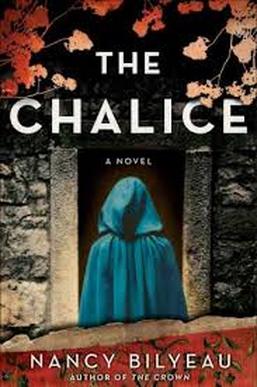 Lovely cover, don't you think? I'm delighted to be joined today by the talented Nancy Bilyeau, author of The Crown and The Chalice, historical thrillers set in Reformation England. From the official blurb: In 1538, England is in the midst of bloody power struggles between crown and cross that threaten to tear the country apart. Aristocrat-turned-novice Joanna Stafford has seen what lies inside the king's torture rooms and risks imprisonment again, when she is caught up in a shadowy international plot targeting the King. As the power plays turn vicious, Joanna understands she may have to assume her role in a prophecy foretold by three different seers, each more omniscient than the last. Joanna realizes the life of Henry VIII as well as the future of Christendom are in her hands—hands that must someday hold the chalice that lays at the center of these deadly prophecies… ********************************************************************************** "In the midst of England’s Reformation, a young novice will risk everything to defy the most powerful men of her era." **********************************************************************************
The other day, I came across a comment you'd made about The Chalice. “I wrote a novel set five centuries ago, in a country I don’t live in, about a religion I don’t practice.” So, tell us, what in the world inspired The Chalice? NB: Both The Crown and The Chalice come from my lifelong passion for English history, which defies all explanation. I know that the conventional wisdom in fiction is “Write what you know,” but I always love entering new worlds in my reading, far from my daily experience. There have been plenty of novels written about modern life in New York City and I am sure they’re quite good but I haven’t read them. I’d rather watch “Game of Thrones” than “Sex in the City.” The Chalice, set at a key moment in the English Reformation--in 1538--is a carefully researched novel. What was your favorite part of doing the research? Least favorite? NB: I have a sizable home library of nonfiction books on England, acquired at a steady clip since I was a teenager. I drew on that base of knowledge when coming up with the broad outline of the plot for The Crown and The Chalice. Then I would do deep dives into certain areas that I needed detail on: life in a priory of Dominican nuns; the mystery behind the missing body of Saint Thomas Becket at Canterbury; the menu of a dinner in an aristocratic household; travel by boat from England to Flanders. All sorts of things! I love finding the little details that I can use to make a scene come alive, such as what would be served as breakfast to Dominican friars in the 1530s. My least favorite is when I can’t find what I need and it’s delaying the writing. But I am stubborn; I keep going until I learn enough to help my story. Joanna Stafford—a former novice—is an unconventional heroine for any time period. Tell us about your thought process as you developed her character. NB: I wanted her to be genuinely pious but to be a real person too, with frailties and flaws, such as a quick temper. Strong but sometimes reckless. Intelligent but naïve. It was important to me that I create a dimensional person. 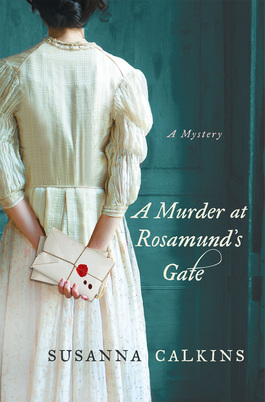 I'm still on a hiatus from this blog for a little while longer...but I've been having fun writing guest posts and doing interviews for other blogs, webzines and even my local paper. To see what I've been writing about, please check out my virtual tour. Also, I received the official HARD COPY of A Murder at Rosamund's Gate yesterday in the mail!!!! That's about as exciting as it gets!!! Oh, and my book was selected as a Barnes & Noble Booksellers' Pick for April! What an honor...I'm thrilled! |
Susanna CalkinsHistorian. Mystery writer. Researcher. Teacher. Occasional blogger. Categories
All
Archives
May 2023
|
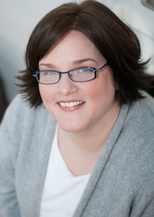
 RSS Feed
RSS Feed